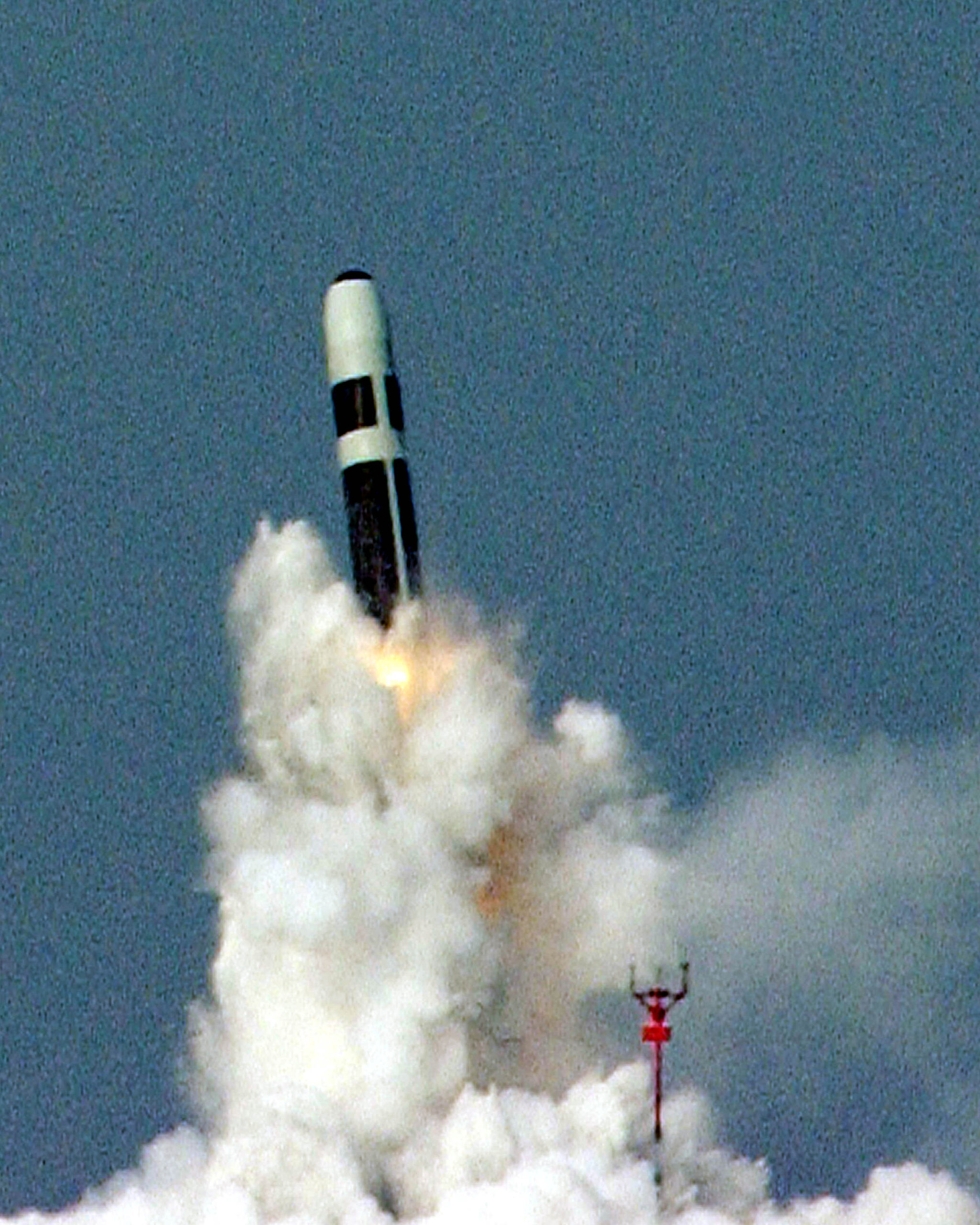Rumours have been circulating on social media for several weeks that there was a problem with HMS Vangaurd’s test launching of a Trident missile in late January. The submarine, which left Devonport last year after an unusually extended seven year refit, was due to carry out a series of exercises intended to show that the submarine and crew were functioning as intended, culminating in the test firing of a missile, known as a ‘Demonstration and Shakedown Operation’ (DASO).
Today the Sun newspaper published confirmation that the test had been unsuccessful, and that the first stage motor of the missile failed to fire, resulting in it falling back into the water nearby: “It left the submarine but it just went plop, right next to them.“
NIS has been tracking the test activities since a warning of the impending test was issued to shipping in late January. HMS Vanguard arrived at Port Canaveral in Forida on 19th December, and was joined by the Ocean Survey vessel HMS Scott on 4th January. Rehearsals for the DASO appear to have taken place between the 19th and 24th January, and again between the 27th and 28th of January. HMS Scott participated in these rehearsals, as did USNS Waters, a US Navy vessel which is typically used for observing DASOs.
The warning to shipping was issued on 29th January, and was in effect between 30th January and late in the evening of 3rd February, local time. HMS Vanguard and both support vessels went to sea on the morning of the 30th, and returned late that evening after the failed test-firing. The Sun reports that the faulty missile had to be recovered from the ocean bed, which appears to have been completed by 11th February. The test was scheduled to coincide with the visit of the Secretary of State for Defence, Grant Shapps, to the US, and he was reportedly observing the DASO along with the First Sea Lord, Ben Key.
The failure is particularly embarrassing for the MOD as the previous UK test firing in 2016 was also unsuccessful when the missile veered off-course and a self-destruct mechanism had to be used. NIS understands that this mechanism is temporarily fitted to missiles during tests, rather than being an integral part of the missile design.
Shapps submitted a written statement to the House of Commons in response to the press coverage. As in 2016 DASO is described as successful, because the test firing failed due to a technical problem with the missile, rather than a failure of the crew or submarine. The statement claimed that the problem was an “anomaly” that was “event specific” and without “implications for the reliability of the wider Trident missile systems and stockpiles”.
Anonymous MOD briefings to the Sun and elsewhere have suggested that the problem wouldn’t have occurred if the missile had been fired in a nuclear strike, and was caused by equipment that was fitted for the test. This is probably untrue. The mechanism for firing the first stage motors, which is probably activated by inertial sensors, is unlikely to be affected by testing equipment. As the missile body appears to have been recovered after spending 12 days on the ocean floor, it is questionable whether a conclusive analysis of the fault could have been carried out over the last 10 days, so the actual cause may not yet be known.
Trident test firings from submarines have been carried out 196 times in total, with only five failures to date, two of which happened during UK tests. The UK had carried out 10 tests before 2016, meaning that the failure rate of the system as a whole is under 3%, whereas the failure rate during UK tests is more than 16%. While this may just be a case of random chance, the consequences for the credibility of the system are severe. The next test firing is unlikely to take place before 2027 at the earliest, by which time it will have been 15 years since the last successful UK test.
The stated purpose of the UK’s nuclear weapons system, including the practice of keeping a nuclear-armed submarine permanently at sea is to visibly hold other nations under threat of a nuclear attack. The failure of test firings on two successive occasions is a failure of the UK’s nuclear posture on its own terms. Set alongside the navy’s struggles to maintain patrols, and relentless increases in the forecast costs of nuclear upgrade programmes, this should be a wake-up call. If the programme is failing to fulfil its purpose, what is the point of continuing with it?
This is a developing story and further details may be added as they become known.
An earlier version of this piece stated that the number of failed Trident test launches was 11, including the January 2024 launch. This detail was taken from a credible source, but NIS has since discovered that it is not correct and amended the piece accordingly. There appear to have been 5 failed underwater launches of Trident missiles, including the UK launches in 2016 and 2024. Another two launches failed during the 18 missile tests on land, prior to underwater testing. A 19th missile launch on land was destroyed due to an error, and is not counted by the US Navy as a ‘test’. Thanks to William Alberque, Jonathan McDowell and Twitter/X user M51.4ever for their assistance on this point.

